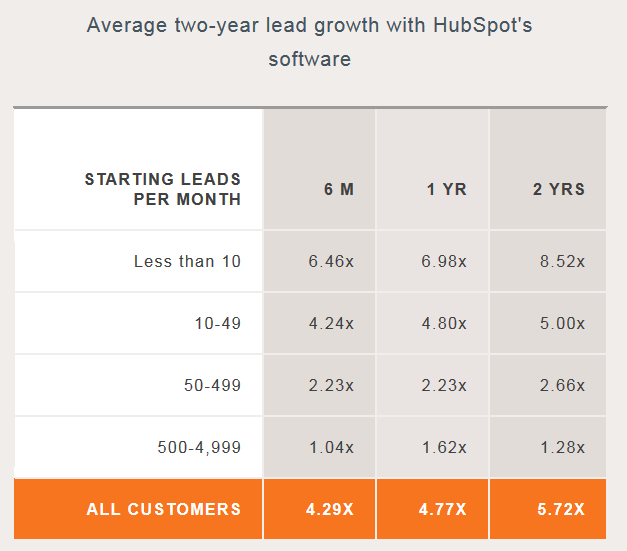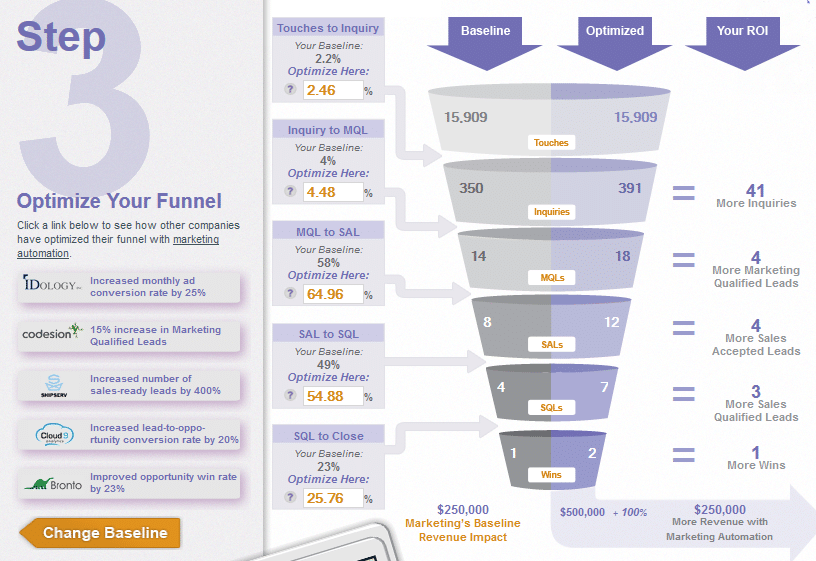A crowd at the doors of the stores, stamping their feet, ready for the big shot. This is not the start of the Paris Marathon…. It’s the sales. 6 months that this period was awaited by the “fashion addicts”. The reason for such a craze? The promise of course! And what a promise: to buy this dress, these shoes or this coat at 30, 50 or even 70% off! Yes, you have all received on D-1 the most beautiful e-mails from your favorite brands, reminding you of the good “deals” that it would be a shame to miss… In B to B, we find the same principle. The selling point? The ROI (Return On Investments).
- “Increase / boost your ROI… “
- “Double / triple your ROI!”
The promises are always enticing… It’s true after all, who wants to invest in a solution that halves their ROI?
How to calculate the ROI?
For many, ROI is important. But how many really know how to calculate it? ROI is “simply” the ratio between expected future revenues (increase in the number of leads and conversions, which generate more income) and the expenses incurred (cost of the project and licenses), all discounted (a euro of tomorrow is not necessarily worth a euro of today). If it sounds childish when you say it like that, calculating ROI requires a certain rigor.
In digital marketing, you can rely on the data collected (browsing paths, email openings/clicks, opportunities gained…), but you still need to automate the collection and processing of data (browsing paths, email openings/clicks…).
The Publishers’ promises
The marketing ROI defined by publishers refers to a variety of definitions. For some, it is the evolution of the number of leads generated, for others, it refers to the total number of conversions obtained. While some publishers are cautious when it comes to R.O.I. and don’t get too far ahead of themselves, others don’t hesitate to make the most beautiful promises. Eloqua, for example, does talk about ROI.
However, at Oracle, we explain that the measurement of the latter depends a lot on the actions that you have judged as generating revenue: a webinar, a subscription to your newsletter, a follow on Twitter or simply the conversion by a salesperson?
The main information to remember is that the measurement of the R.O.I. at Eloqua must be done by taking into account both indirect actions (related to marketing) and direct actions (from “hot” lead to sales). It will be a webinar for marketing or a call for direct sales actions.
As far as Neolane is concerned, acquired by Adobe, there is no direct promise in terms of ROI on their site. It is in the downloadable documentations that we will find some details but Adobe does not play on the table of promises either on their website or in the proposed documentations.
However, on the Adobe TV site, you can find this video providing some details in terms of Adobe Neolane ROI. Despite everything, we must admit that it is not about selling the solution as a revolutionary platform, but rather to show you through a concrete case, how the ROI and the RIA (rich experiences / Rich Internet Applications) are calculated.
For this, the example of Levi’s curve ID speaks for itself. The goal was to measure the conversion rate for people going through the Levi’s curve and other Internet users going through a classic purchase method (product selection and purchase). As for the more confident players: Hubspot.
You will find the details of the number of leads generated in two years by the Hubspot solution.

Hubspot even offers you to calculate your potential ROI with the “ROI calculator”. All you have to do is enter the number of visitors, leads on your site per month, as well as the number of customers and the average revenue generated per consumer. And as if all that wasn’t enough, a study on the ROI generated by the Hubspot platform is underway and will be available during 2015.
Measuring AND comparing: one cannot be done without the other.
A good ROI is measured AND compared. It is compared to companies in the same industry with the same type of structure (same number of employees). An ROI is worthless if you can’t see where you stand. Doubled your ROI? Great. But if it’s still 4 times lower than your competitor’s, then not great. It’s true that you can’t know what your neighbor’s ROI is, but you can know their sales, their market share, and compare them to yours.
Logically, if your ROI increases, you should be better positioned than the competition. Of course, you have to take into account other factors such as whether or not you are evolving in a click-and-mortar environment or if you are a pure player and E-Commerce actor. To say that you have converted better is fine, but you have to place these performances within a larger scale. Too easy otherwise.
What if it all depends on your level of digital marketing maturity?
There are several things to consider. According to Marketo, calculating ROI is a lot more complex than it sounds:
- First, you need to identify the sources of your marketing department’s spend and then determine the level of spend for each channel.
- Calculating the cost to demand ratio. The objective here is to have a better idea of the budget distribution and to make the necessary adjustments according to the observed performance.
- Measurement of the conversion level of each channel.
Marketo also offers, like Hubspot, a “Marketing Automation ROI” calculator.

Finally, according to Marketo, your marketing ROI takes into account your level of digital marketing maturity. According to a study of 250 of its customers, Marketo observed a correlation between maturity level and RPM (Revenue Management Performance).
- Customers at the basic level of marketing maturity who started using the marketing automation solution saw their number of qualified leads increase by 7%.
- For customers at the Marketing & Sales Effectiveness level, the figure is 21%: increase in sales effectiveness (lead scoring).
- Finally, for Revenue Performance Management customers, the number of qualified leads increased by 29%: optimization of program investments.
The level of digital marketing maturity is therefore a crucial element to take into account when calculating ROI. If it seems logical once you’ve been told, this element remains very little (and even too little) taken into account. Because it is not always easy to measure your level of digital marketing maturity, Merlin/Leonard has set up an offer to accompany and advise you in your evaluation.






